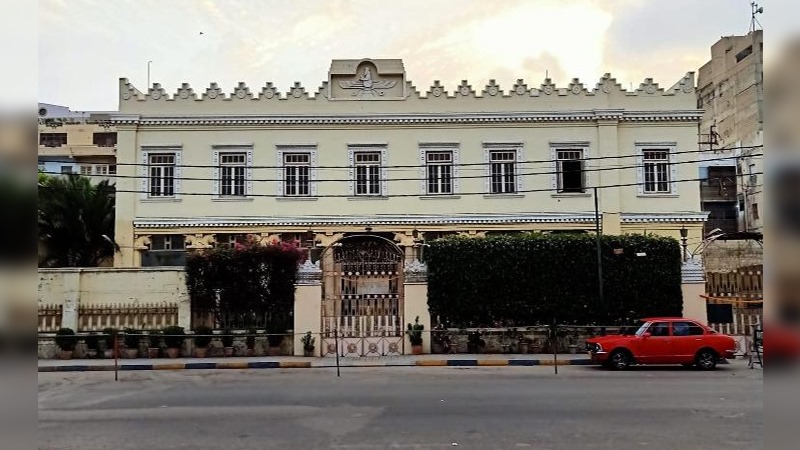Natasha Mavalvala is standing on the upper floor of the H. J. Behrana agiari in Karachi’s Saddar, singing hymns for the souls of the departed. Her audience is a camera, recording her recitations of the Humbandagi prayer. The hall, which used to be packed with Parsis, echoes with her solo voice.
Article by Anushae Engineer | SAMAA
The coronavirus pandemic has forced Parsis to turn to technology to conduct the annual communal prayers. Even with social distancing, as many Parsis are elderly, the general consensus was that it would be putting them at risk by holding the sessions at the agiari.
When it was confirmed that the Navroze mela set for August 16 and the humbandagi would not be held, Tushna Patel approached the agiari’s trustees. “Let’s not break this chain we’ve had for so many years,” she told them. She pitched the idea of recording the sessions and sharing them online.
In Humbandagi (or communal prayer in Gujarati), Parsis gather to sing hymns in the 10 Mukhtad days before Navroze, the New Year for those of the Zoroastrian faith. It is believed that during Mukhtad, the souls of the departed descend to Earth to bless their loved ones.
“You cannot see them but [the souls] make their presence felt, and the reading of the Humbandagi holds you together,” Mavalvala explained. “It gives peace to them in a religious sense… You’re not just praying for their soul but your soul too.”
Usually, a lead singer begins promptly at 7am. Mavalvala has been fulfilling this role for the last six to seven years. She sings one Gatha at a time, first solo and then with the audience repeating after her. A translation follows before the recitation of the second one. Gathas are the conversations believed to have taken place between the prophet Zarathustra and Ahura Mazda, who Zoroastrians worship as God.
A total of 39 gathas have to be completed every year, meaning three to four gathas have to be recited each of the 10 days before Navroze. Everyone in the room is expected to remain standing throughout the session which takes no more than twenty minutes.
Natasha Mavalvala, like Tushna Patel, has been attending humbandagi her whole life. She recalls the excitement she experienced as a child, attending the sessions in uniform with her brother and father before hurrying to school with her friends. Most Parsi children during the 1970s and 80s attended Mama Parsi Girls Secondary School or BVS Parsi High School, both of which are within walking distance from the agiari. This was also a time when the majority of Parsis lived in Saddar and so it was convenient for parents to bring their children to the agiari before heading to school or office at 7:30am.
“It was just once a year, 10 days in the year, but it brought a lot of us together,” said Mavalvala. “I remember it as a happy time, not as a religious time, but we learned a lot from it. We used to sit there and hear Godrej Sidhwa giving a sermon all 10 days.”
Godrej Sidhwa, a prominent Zoroastrian priest in Karachi who has passed away, used to pick out passages from the gathas and tell them as stories, often incorporating them into his sermons. Once he retired from his priestly duties and grew elderly, the sermons that followed gatha recitation ended altogether, marking the end of an era.
A mere two or three dozen Parsis have been attending hambandagi in recent years, compared to the hundreds who used to pack the prayer hall. “Ours is an aging community and the age bracket now is 70 years and above. People can hardly walk up the stairs to the main hall,” Mavalvala said. “A lot of emigration has also taken place.”
Pleasantly enough, though, Mavalvala and Patel have realised that by going online, the number of Parsis praying the gathas—albeit from the comfort of their homes—is far greater than could ever be physically possible in the agiyari.
Mavalvala sent the daily prayer video snippets to an email chain of hers with around 500 people, while Patel did the same thing through a WhatsApp group with almost 200 members. Both women said that what they had initially expected to be circulated among a few hundred Parsis in Karachi has instead reached well over 1,500 worldwide.
“The response was totally overwhelming,” Patel said. “People are telling me not to shut the [WhatsApp] group because along with Hambandagi, I’ve been posting other information, prayers and prayer books.”
Both women received messages from Parsis all over the world, grateful for being able to reconnect to their childhood memories of the Saddar agiyari. Aside from that, people like Rashna Gazder, a well-respected piano and language teacher, who moved to Karachi from Bombay 30 years ago, are appreciating that because of the technology they can pray at any time. “I told Tushna, I got involved in [hambandagi prayer] after a very long time,” Gazder added.
Patel reckons that they will have to continue for those people who will not come to the agiari next year also. “We’ve laid the foundation for it and I think we have to continue with it.”

